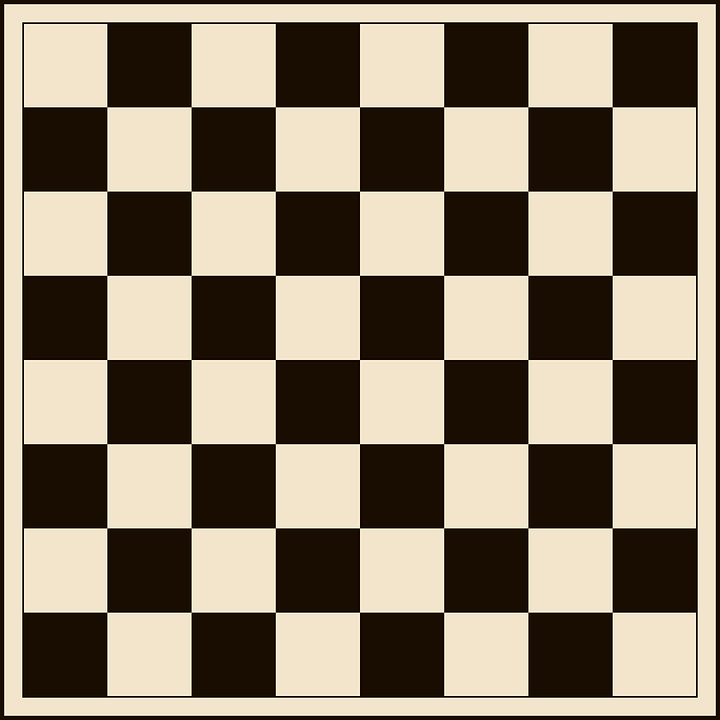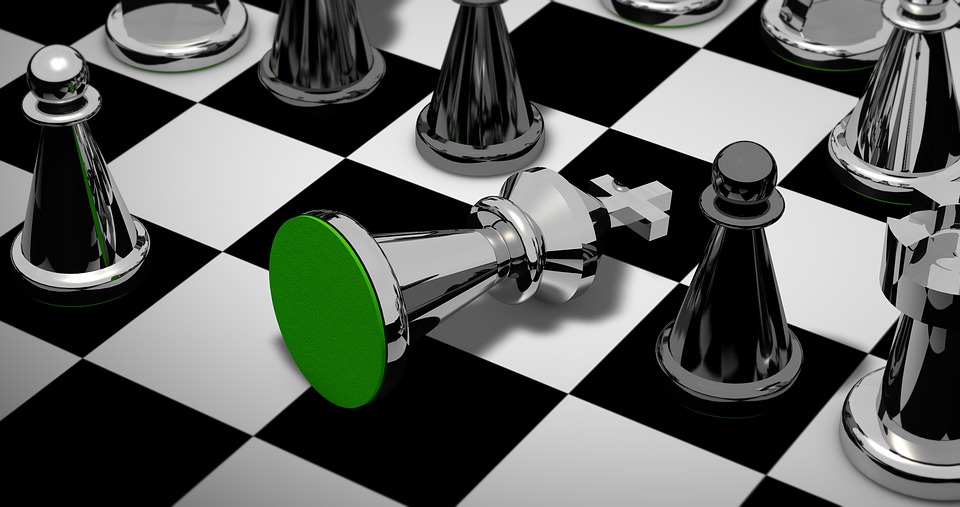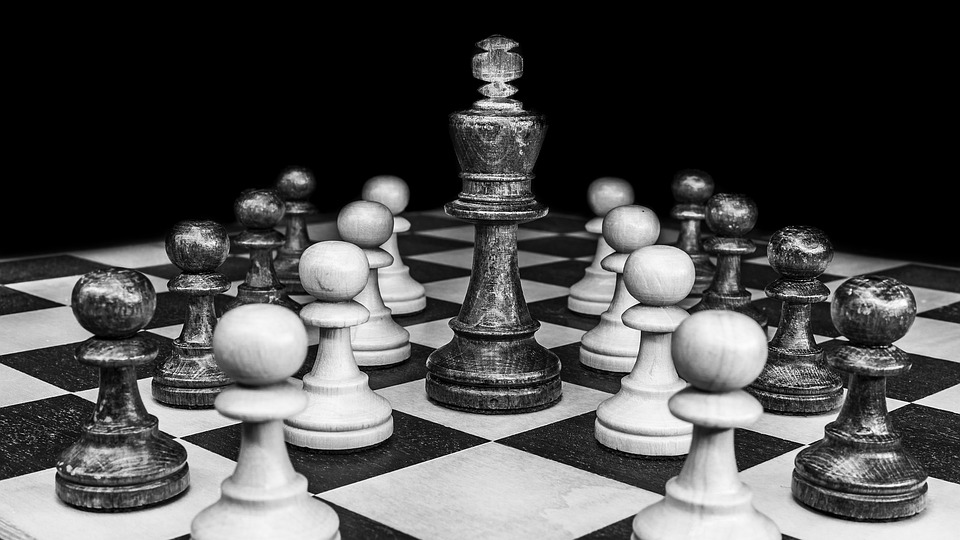Facts and History of the Chess Game
Written by Manya Pandey, a first-year undergraduate student.
Chaturanga was a common game in northwestern India around the 7th century and is popularly seen as the earliest precursor of modern chess.
Written by Manya Pandey, a first-year undergraduate student.
An easy-to-play, but hard-to-master game, Chess has been around for over 1500 years, and found its roots in India way earlier than that.
But, as with most things historical, there are a few versions of the history of chess and how it evolved into the game we know today.
Before we get into the whole history of it, here’s a brief introduction to chess
Chess is a two-player board game of strategy with almost or no hidden information which simply means whatever is happening is there in front of your eyes and everyone has an equal chance at winning. To many, this simplicity and transparency are synonymous with art.
Blaise Pascal, the famous French mathematician, physicist, and inventor, considered chess a gymnasium of the mind
Chessboard and how to play chess

The chessboard is an eight-by-eight black and white grid of 64 squares and it is played by moving pieces from block to block.
The main aim of the chess game is to strike out the King – if any player’s king dies, the game is over and that person loses the game.

Let’s have a quick look at how to play chess
There are sixteen pieces for each player.
These are:
Eight pawns
Two bishops
Two knights
Two rooks
One queen
One king
All these pieces basically protect the King and attack the opposite side and knock out their side of the pieces – so if your pieces keep getting knocked out, you have fewer pieces to protect the King.
Thus, the players have to take down each other’s pieces. The pieces can be captured by moving to a square that’s occupied by an opponent’s piece. Also moving is compulsory, players have no way of skipping a turn.

Here’s how they are arranged and what they all do.
In competitive games, the colours (white and black), are allocated to players by the organizers, but in informal games, you can do as you please: a coin toss, or play rock paper scissors. Common practice is to fold one piece of each colour into your palms and have the other player choose.
The rules of the game are published by the international federation of chess otherwise known by its French acronym FIDE (Fédération internationale des échecs).

The Pawn

When a game begins, each side starts with eight pawns. Here’s how they are located – they are in the front row. A pawn moves forward to the unoccupied square. It can move two blocks on its first turn.
The Rook

Each side starts with two rooks (see the image of the board above)
Hence, all four corners of the board have rooks.
A rook moves in straight lines, vertically or horizontally. It can leap over several squares at once as long as there are no other pieces in its way.
The Knight

A knight moves in an “L” shaped trajectory (like a hop). It can take over any of the closest squares that are not on the same rank, file, or diagonal. Simply put–it moves two blocks vertically and then one horizontally.
A Knight is the only chess piece that can jump over other pieces on the board.
The Bishop

A bishop moves diagonally, it can also cover multiple squares as long as there’s no hindrance – it basically moves like an X shape. It is a minor piece like the knight.
The King

The King moves one square in any direction. It’s the most valuable piece, therefore. If the king falls, you lose the game, so an attack on the king has to be stopped at all costs.
The Queen

The queen has all combined powers of a rook and bishop and can move any number of squares diagonally or vertically and horizontally, but cannot leap over other pieces.
Is chess only for the intelligent?
No. It’s a popular myth that chess can only be excelled by the born prodigies, well that may be true but remember every chess master was once a beginner.
Now that you know how to play chess, we can shed some light on its origins.
Here’s a short history Of Chess
Fun Fact—The oldest known chess manual titled Kitab ash-Shatranj (the Book of Chess) was 840 decades old, but it’s a lost book! We’ve just seen its references in later works by the Persian chess player al-Adli ar-Rumi (800–870).
This book traces back the origins of chess to a 7th-century Indian game called chaturaṅga, the Sanskrit translation for “four divisions of a military”.
Now let’s dive into the detailed history of chess.
As stated earlier, the origin of chess is a matter of debate even today. We don’t have enough evidence to believe that chess existed in modern-day before the 6th century CE.
Chaturaṅga – seen as the ancestor of chess
Chaturanga was a common game in northwestern India around the 7th century and is popularly seen as the earliest precursor of modern chess.
This is primarily because Chaturanga had two main features that are found in all chess variants that evolved later, which was this:
- Different pieces had different powers
- Victory was based on one piece, the king.
What the name means
Chaturanga is a Sanskrit name for a battle formation and it is mentioned in the Mahabharata.
Chaturanga meant four divisions of the military – the infantry, cavalry, elephants, and chariotry which stand for pawn, knight, bishop, and rook, respectively in modern chess.
Some historians believe that Chaturanga evolved into into shatranj a two-player game that was a lot like chaturanga, except it had another piece, names firzān (counselor).
Chess introduced in Europe
Chaturanga or shatranj is said to have travelled to Europe through Persia, and the Arabian empire. The oldest recorded game has been found in a 10th-century manuscript. This was played between a Baghdad historian and a student.
Spreading in other parts of the world
Tracing the history of chess in other parts of the world, it is said that the Muslims were the ones who took the game to North Africa, Sicily, and Spain by the 10th century.
The Vikings are said to have taken chess to Iceland and England.
Some historians believe that chess travelled from India to Persia using the infamous silk routes (these are roads that helped carry precious silk and other good and political messages across the borders).
The Ashtapada
This ancestral game was played on an 8×8 uncheckered wooden board and has been referenced in The Vinayapitaka, a sacred Buddhist text from 4th or 3rd c. BC – it is one of the games that the Buddhists believe should not be played by people.
The text also mentions a game called Dasapada, which means 10×10 gaming board.
Here’s a detailed record of the modern history of chess.
A quick look at the history of modern-day chess
Modernisations began as early as 1200 years ago. The search for the earliest record leads back to 13th century Spain where it all began and once again spread into the rest of Europe.
One of the most striking developments was regarding the movements of chess pieces which are very similar to the present variations. Also by the end of the 15 century, the queen had become the most powerful piece, and that is why the game earned a new name as “Queen’s Chess” or “Mad Queen Chess”
A special chess move known as Castling was also developed around this period. It was then known as the “king’s leap”, which is exactly what it is. Under this tactic you can switch the position of your vulnerable king in the centre to the edge of the board with a rook, it can be done as long as your rook is unmoved and no pieces are inhibiting the teleportation.
All these rules spread like wildfire for how interesting they were and got famous players and philosophers of the 15 century to write about chess theory and rules.
The romantic era hit chess
That was a time when coffee clubs became a new hub for chess and a lot of attention was paid to the aesthetic part of the game. That’s when rules like the white moves first came into existence and standardization of rules was mandated.
What became of chess then is presently known as Western chess or international chess. By the end of the 19 century, there were hoards of chess clubs, manuals and masters but the actual sport was born just after that.
A short history of Chess – as we know it today
The first modern chess tournament was organized in London (around 1851) by an English chess player named Howard Staunton, but was won by the German mastermind Adolf Anderssen.
The founder of Chess
There is no official founder of chess, but Wilhelm Steinitz, an Austrian -American chess player is popularly regarded as the first world global chess champion. Being the first official World Chess Champion, Steinitz set a scientific approach to the game by breaking down the positions and pieces into some accurate pattern or set of moves.

Image Credit: commons.wikimedia.org
His win over the German chess master Johannes Zukertort in 1886 marked the first official win in a World Chess Championship.
His win transformed the romantic era practices of ascetics into much more calculative and tactical approaches.
After 8 years of keeping the world champion crown, Steinitz eventually lost to a much younger German player named Emanuel Lasker, who was a mathematician by profession and kept the title for 27 years which was the longest tenure of any world champion!
By the end of the 19th century, chess tournaments were taking place the world over. The Olympiad (a famous chess tournament that happens every two years) was first held in Paris in 1924.
Then the World War happened
The most interesting development in the history of chess happened around this time. Every player knows this evolution as “controlling the centre”. Hypermodernism, a new school of chess, was founded in the war period by players like Aron Nimzowitsch and Richard Réti. These players brought forth the idea of dominating the centre with pieces other than pawns.
Facts About Chess
1. The chess pieces are always referred to as white and black even if they’re not.

While the chess pieces may not always be white or black (a set may be a yellowish or off-white colour or somewhat darker like brown or red) but no matter the colour the pieces are always referred to as white and black.
2. Here’s an interesting puzzle
If you keep one grain of wheat on the first square of the chessboard, two on the second, four on the third, eight on the fourth, and keep going. How many grains of wheat would you require for the 64th square? The answer is 9,223,372,036,8 54,775,808 (roughly 9.22x10e8) grains of wheat!
3. Do you know clocks are used in competitive chess? but before that players used sandglasses

Special clocks (with two buttons on each side of the players) are used in games with time control. This practice began in London with the use of sand glasses which were later upgraded to a mechanical Chess Clock after it was invented by Thomas Wilson in 1883.
4. Chess was once used to teach moral lessons!
Chess became so influential in Europe that monks or philosophers often used chess metaphors to deliver moral equations of life. For instance, a book named Liber de moribus hominum et officiis nobilium sive super ludo scacchorum (‘Book of the customs of men and the duties of nobles or the Book of Chess’), was written by an Italian monk Jacobus de Cessolis . The book was really popular in the middle ages and was translated into multiple languages. Bizarre right?
5. A young player named Dr. Emanuel Lasker was the longest-reigning world chess champion.
He kept the title for about 27 years, which was the longest of any other player in the history of chess. He was a German mathematician by profession and a good friend of Albert Einstein.
Some quick facts about chess
6. The word “checkmate” comes from the Persian word “shāh māt” which loosely translates to “the king is dead”
7. How does the combination of chess and physics sound to you? It’s called Quantum chess.
8. Wilhelm Steinitz, an Austrian-American chess player is the first world global chess champion
9. A computer named Deep Thought was the first artificial intelligence device to beat an international chess grandmaster in November 1988, in Long Beach, California.
10. The Indian Chess Master Viswanathan Anand has won all three formats of chess including knockout, tournament, and match in the World Chess Championship.
Before we wrap up, did you know the term rookies from a chess piece? Rookies, a term used for players in their initial stages of learning, are named after the Rook in Chess because rooks are usually, the last pieces to be moved into action, and the same goes for Rookies on a team.
Hope you know enough about the Nobel now

Better Your Child’s G.K. In 3 Minutes – Get This Free Newsletter
Get fun facts, simple and easy news, quizzes, and lots of other interesting things to read in your mailbox – for free! It’s what we call GK-on-the-go!
Write for us!
I Kid You Not now has a large readership across India and also parts of the world. If you want to write for us, you can submit your story here. You can also apply to become a news anchor. Apply here



Comments